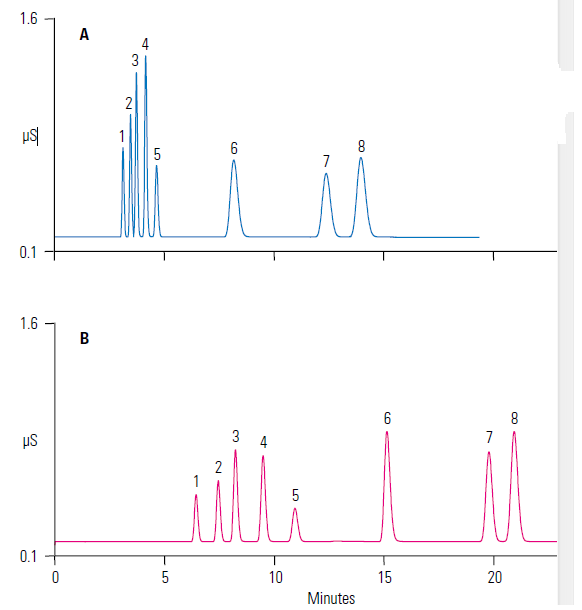 Designing tandem mass spectrometry (MS/MS)-based proteomics experiments requires choosing the best protein and peptide separation method available for optimal proteome coverage. But how does a researcher decide which method is best? Mostovenko et al. (2013) provide a neat summary exploring this conundrum, giving insight into which of three of the most popular methods—strong cation exchange (SCX) chromatography, peptide isoelectric focusing (pIEF) and sodium dodecyl sulfate–polyacrylamide gel electrophoresis (SDS-PAGE)—deliver the best results, along with the experimental conditions under which these methods are best applied.1
Designing tandem mass spectrometry (MS/MS)-based proteomics experiments requires choosing the best protein and peptide separation method available for optimal proteome coverage. But how does a researcher decide which method is best? Mostovenko et al. (2013) provide a neat summary exploring this conundrum, giving insight into which of three of the most popular methods—strong cation exchange (SCX) chromatography, peptide isoelectric focusing (pIEF) and sodium dodecyl sulfate–polyacrylamide gel electrophoresis (SDS-PAGE)—deliver the best results, along with the experimental conditions under which these methods are best applied.1
In addition to comparing each method using standard samples for consistency, the researchers also looked at the additional information available from each process. Because prefractionation is used to reduce the complexity of samples prior to MS analysis, physical characteristics for each fraction can be picked up by different algorithms and used to refine peptide matches and predictions arising from the raw spectral data. For example, SDS-PAGE separation gives molecular weight ranges for each gel slice prepared for MS, whereas pIEF shows the isoelectric point.
For consistency, the scientists used two samples—Escherichia coli cell lysates and human plasma—for analysis. Each sample underwent appropriate trypsin digestion (e.g., in-gel digestion following SDS-PAGE preparation; in-solution digestion was utilized prior to pIEF and SCX). SDS-PAGE and pIEF were carried out under standard methodologies. SCX fractionation was carried out using the Dionex UltiMate 3000 LC system (Thermo Scientific). Mostovenko and colleagues then examined the peptide digests using ultra-high-performance liquid chromatography (PepMap C18 columns, Thermo Scientific)–MS/MS analysis. The team processed all resulting data as one batch within a single Taverna workflow.
The results showed that SCX fractionation gave the best proteome coverage of all three methods, for both samples. The method identified 1,139 proteins from 6,731 peptides in the E. coli sample and 183 proteins from 1,642 peptides in the human plasma sample. Relative to full UniProt FASTA sequences, this represented 35% and 29% mean protein coverages, respectively. For SDS-PAGE, the results were 34% and 23%, and for pIEF they were 27% and 24%.
The researchers then examined whether the additional information gleaned from each method could improve the resulting data. They found that, using pH, they could determine outliers in the pIEF fractionation method, since separation into fractions was consistently linear according to this parameter. Similarly, using parent-protein molecular weights to compare peptide identity predictions with gel slice location pre-digestion also aided in outlier detection for the SDS-PAGE prepared samples.
Although the experimental results pointed strongly to SCX as the best fractionation method for proteomic characterization, the researchers suggest that initial sample loading could be a limiting factor. For example, the optimal protein load for SDS-PAGE samples is 30 μg, whereas for pIEF it is 50 μg, and SCX can handle loads in excess of 100 μg. They also acknowledge that in keeping the LC-MS/MS parameters standard and consistent, it may not have been possible to achieve optimal operating conditions for each fractionation method, thus compromising results.
Despite the experimental limitations, the authors comment that the combining of analyses into one Taverna workflow was successful and allowed efficient comparison of three separate data sets. Furthermore, when deciding which method to use, they found it important to take into account the value of additional information provided by each fractionation process, a consideration that can enhance the proteomic data collected.
Reference
1. Mostovenko, E., et al. (2013) “Comparison of peptide and protein fractionation methods in proteomics“, EuPA Open Proteomics, 1 (pp. 30–7), doi: 10.1016/j.euprot.2013.09.001.
Post Author: Amanda Maxwell. Mixed media artist; blogger and social media communicator; clinical scientist and writer.
A digital space explorer, engaging readers by translating complex theories and subjects creatively into everyday language.
Leave a Reply